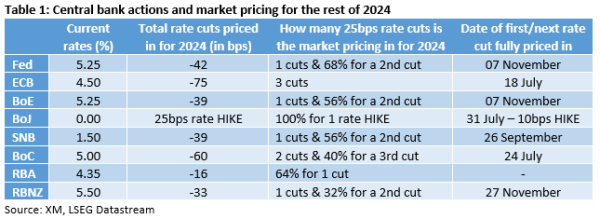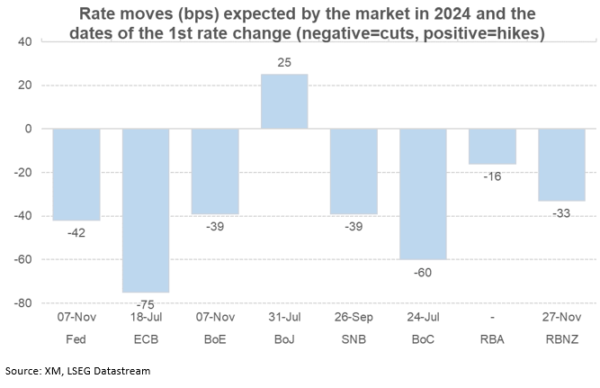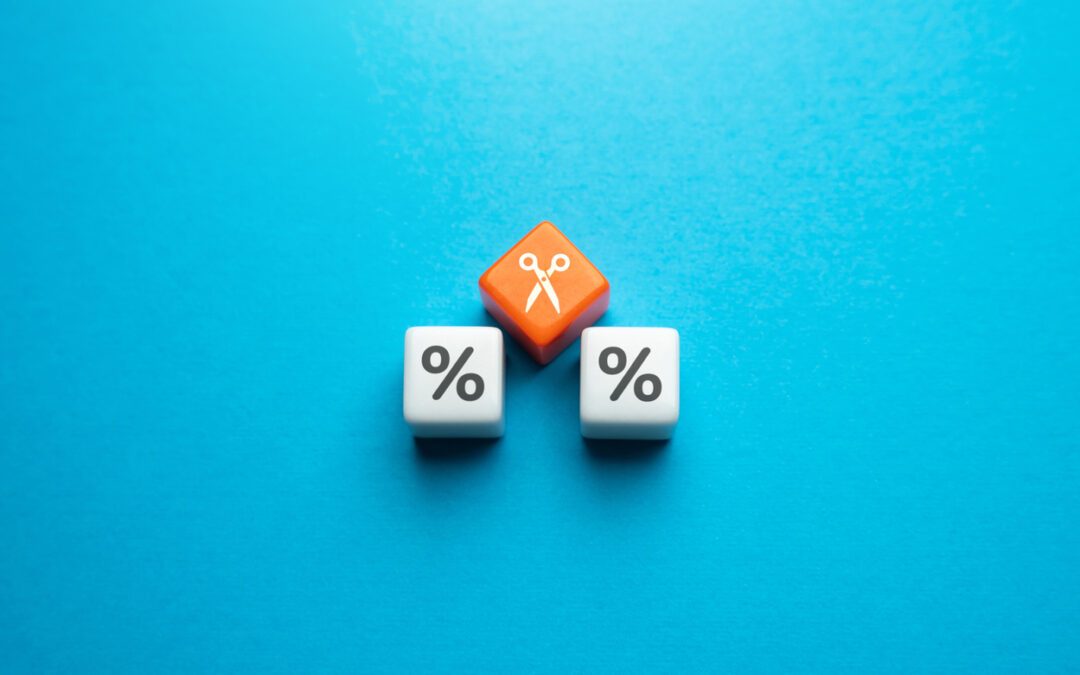- Market is still in monetary easing mode despite fewer rate cuts priced in across the board
- Divergent cut expectations for the Fed and the ECB, reflecting economic conditions
- The ECB and the BoC are seen cutting in July; the RBA might not cut rates this year
- BoJ is seen hiking again during 2024
The market is digesting both the latest geopolitical developments and the recent rally in oil prices as the countdown to the May 1 Fed meeting has begun. Compared to the start of 2024, fewer rate cuts are expected by the key central banks with the market also contemplating a non-negligible possibility of the Fed keeping its rates unchanged during 2024.
Fed and the ECB: divergent paths
The initial market expectations of around six rate cuts in 2024 for both the ECB and the Fed were quite puzzling considering the perceived health of these two economies. The economic divergence between the US and the euro area has since become more pronounced as Chinese growth continues to disappoint and despite some very tentative positive signs from the euro area business surveys.
The Fed is seen cutting its interest rates by 42bps in 2024, which translates to one full 25bps rate cut and a 68% chance for a second rate cut of similar magnitude. The first rate cut is priced for November, clearly reflecting the recent trend in US data releases. With growth expected to stay north of 2% for the first quarter of 2024 and inflation remaining elevated, there is a strong possibility that the first Fed rate cut could be pushed out even further. Also, the November elections are gradually coming into the picture, complicating the Fed’s position.
On the flip side, the continued economic growth weakness and the sizeable easing in inflationary pressures in the euro area have opened the door to the market pricing in three ECB rate cuts of 25bps each in 2024.

BoC: two rate cuts and room for more
The Bank of Canada is probably the most dovish central bank at this juncture. The significant progress made in inflation was acknowledged in the most recent BoC gathering with Governor Macklem talking about the need for further evidence of a sustainable easing inflation. When examining the domestic issues, especially the housing sector, one could say that the two rate cuts currently priced in are probably an underrepresentation of current situation and hence more rate cuts could be announced in 2024.
BoE, SNB, RBNZ: one rate cut and done for 2024?
These three diverse central banks are probably going to announce at least one rate cut in 2024. The UK continues to experience high inflation and a relatively low growth rate. Bank of England members are preparing for the much-touted rate cuts, but the threat of renewed inflationary pressures, on the back of the latest geopolitical developments supporting the recent oil price rally, is keeping them up at night.
The year started with the market expecting almost four rate cuts by the Reserve Bank of New Zealand in 2024. Similarly to other central banks, inflation is proving stickier even though recent data is pointing to a weakness in consumer spending. Somewhat surprisingly, the RBNZ maintained its hawkishness at the recent meeting and poured cold water of dovish expectations. The market expects only 33bps of easing in 2024.
The Swiss National Bank surprised the market with its March rate cut. The low inflation forecasts for both 2025 and 2026 could mean that the SNB is not done yet. Hence, the market is currently fully pricing in another 25bps rate cut by September with around 56% chance of one additional move by year-end.
RBA: could it keep rates unchanged for 2024?
The Reserve Bank of Australia was the last one to hike in 2023 and the market is only assigning a 64% probability for a 25bps rate cut in 2024. Such a move though could become even more improbable if China finally manages to return to growth, influencing its main trading partners and the commodity markets.
BoJ: the market wants more
The first rate hike since 2007 has opened the market’s appetite for further rate moves, which matches Governor’s Ueda current thinking. The market is pricing in at least another two 10bps rate hikes in 2024 with the current yen weakness, and its impact on imported inflation, potentially offering the Bank of Japan an excuse to do even more down the line.










